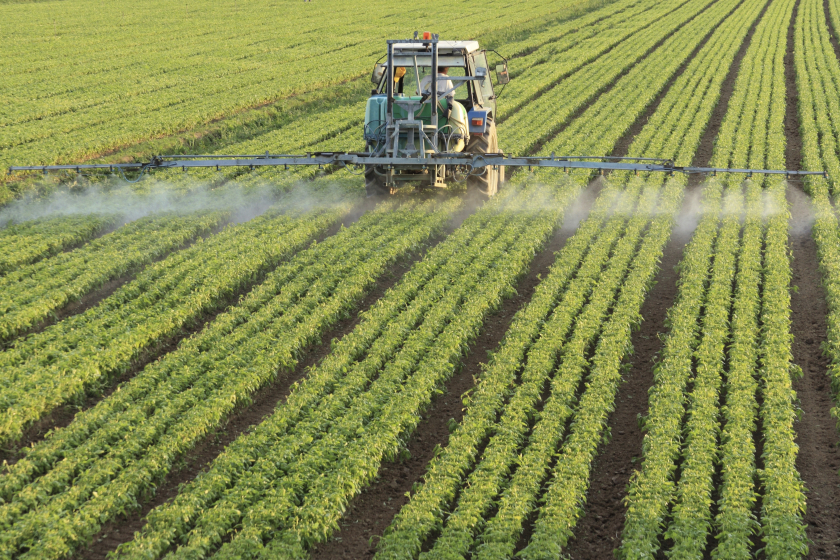 Do you facilitate the success of agriculture as we know it? Have you applied newer technologically-advanced farming tools/methods in order to ensure your crops and employees have a better chance at success? Then you may have done exactly what is necessary to further the growth and popularity of the agriculture industry. The evolving path of innovation in agriculture continues to sustain infrastructure globally.
Do you facilitate the success of agriculture as we know it? Have you applied newer technologically-advanced farming tools/methods in order to ensure your crops and employees have a better chance at success? Then you may have done exactly what is necessary to further the growth and popularity of the agriculture industry. The evolving path of innovation in agriculture continues to sustain infrastructure globally.
Like the cotton gin that bolstered cotton production and lowered cost in the late 18th century, developments in various aspects of agriculture help secure and solidify the industry’s place in our future. Even the rudimentary invention in Egypt of an irrigation canal in 3100 BCE helped to establish agriculture as an integral part of nations’ economies. Because of that small, seemingly insignificant invention, the beginnings of agricultural inventions marked the starting point for a future filled with cost-effective and innovative solutions for farming hopefuls.
When novel agricultural inventions create cost-effective solutions and consistent results, this serves an invaluable purpose, bringing with it the promise of financial and economic stability. According to Global Agriculture, the industrial agriculture sector now employs more than one billion people, and is accountable for employing nearly 40 percent of the workforce in totality. And to think it all started with a crudely made canal!
The Progression of Agricultural Inventions
Problems and progress are no strangers to the agricultural field. Not only do technological advances address the needs of the current agricultural market, they are necessary for humankind’s very survival. Without them, because of the notable influx in the population over years, fewer people would have access to healthy, home-grown foods. Older methods, while efficient for their time, cannot meet the high demand necessary to sustain the vast numbers of people and animals on earth. Here is a brief overview of some of the standout, innovative moments that helped propel the agricultural community to its current, resilient success:
- 1800 AD — Worldwide total of irrigated acreage reaches almost 20 million acres
- 1872 — Gibson patents the residential sprinkler
- 1892 — Froelich is credited with the first successful gasoline tractor
- 1904 —The single hose coupling used for connecting or repairing garden hoses is created; this invention is still available worldwide
- 1930s — Portable irrigation increases; above-ground irrigation revolutionizes agriculture and is still popular today
- 1933 — Ferguson perfects the first hydraulic lift with automatic draft control
- 1964 — Drip irrigation emerges as developer Chapin’s imagination gives birth to another wave of innovation in the agriculture industry
- 1994 — Satellite technology emerges and is used for planning and tracking farming practices; biotechnology is approved by the FDA (AITC)
Striving to Prosper
How do you make the current agricultural industry fit your various needs? Economic growth and self-sufficiency through evolving farming methods feed the agricultural boom. The invention of irrigation — allowing the necessary nutrients to help crops thrive — is a simple, yet ingenious, response to one of the many agricultural engineers’ questions on how to apply efficiency while facilitating consistent product results. Like the agricultural solutions on display at Casella macchine agricole, progressive methods — such as drip irrigation — or products like HydroSat that change how future agricultural operations will be performed, continue to garner prosperity in the agriculture industry.
Historical inventions that have continued to evolve in agriculture allow the small farming establishments that make up 72 percent of all farms worldwide — as mentioned at Global Agriculture— to compete in an often competitive and saturated market. Reducing labor costs and waste with revolutionary agricultural machines conserve water. Tested methods ensure crop growing data are measurable and able to be compiled and used. Innovation in farming transforms agricultural engineering into a viable and worthwhile career choice for the farmers of the 21st century.
Fueling Your Success
Globally, 2.4 million organic farmers raise organic food worth 75 billion euros (FIBL). As the movement against using pesticides and growth hormones continues to gain in popularity, innovation plays a pivotal role in how the buyers and sellers of crops do business. Conserving water and applying nutrients with drip irrigation systems appeal to organic farmers. The versatility of drip irrigation, paired with options like utilizing a re-winding system with hydraulic roll-guide drip line reel (Casella.it), allows you to increase productivity. Excellent ideas can turn dreams into realities. When the agriculture sector thrives, it supports progressive thinking and economies across the globe. Are you a born innovator? Do you see the fruit that is produced from agricultural ingenuity? If you recognize this, you also play a vital role in furthering agricultural success as a whole.







